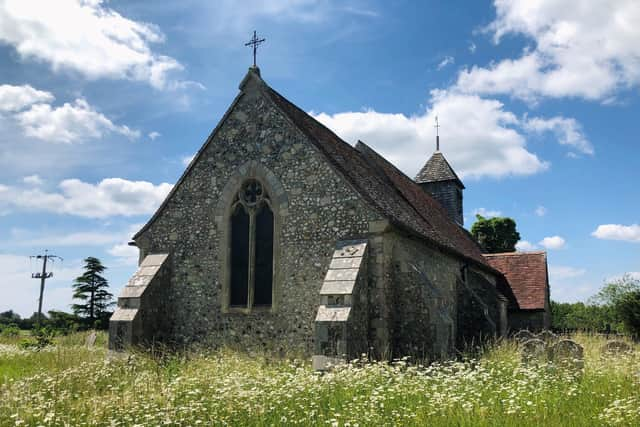St Mary’s Church in Binsted is now a grade II* listed building
and live on Freeview channel 276
After visiting St Mary’s Church, in Binsted, inspectors said it was ‘particularly important and of more than special interest.’
The grade II* status puts the 12th century flint stone church among the elite of England’s listed buildings. Of the 500,000 listed buildings in the country, only 5% have been granted grade II* status, which means St Mary’s sits alongside Blake’s Cottage in Felpham, the Marlipins museum in Shoreham, Battersea Power Station, Chichester Festival Theatre and Tate Britan as one of the most important structures in the country.
Advertisement
Hide AdAdvertisement
Hide AdPenny Hadley, chair of the Friends of Binsted Church, which raises money for the church, said: “The friends are delighted at this news. Let’s hope we can resume our annual Strawberry Fair which raises money for the fabric of the church and brings so many people to enjoy this beautiful countryside.


“We hope that the new listing may help Binsted in its battle against the Arundel Bypass. The present Preferred Route passes 10m from the churchyard wall on a viaduct, and 30m from the church, and the church’s future would be in doubt.”
Highways England said they were already working on ways to minimise the effect of the bypass on the historical building.
Senior project manager at Highway’s England Andrew Jackson said: “We are aware of the change in status of St Mary’s Church and were already seeking to minimise any potential impact to the building as well as the community that it supports. We do anticipate being able to make improvements to our design that will increase the distance between the new road and this historic building. The final design will be presented for public consideration later in the year.”
Advertisement
Hide AdAdvertisement
Hide AdThe churches’ new categorization is a fitting reflection of its colourful past. Built around 900 years ago, it’s 12th century roots are still visible in its font and wall paintings, while the sawn off stumps of the 14th century rood screen stand testament to the destructive violence of England’s reformation. Its restoration in the 1860s, meanwhile, was an important early project by Victorian architect Sir Thomas Graham Jackson.